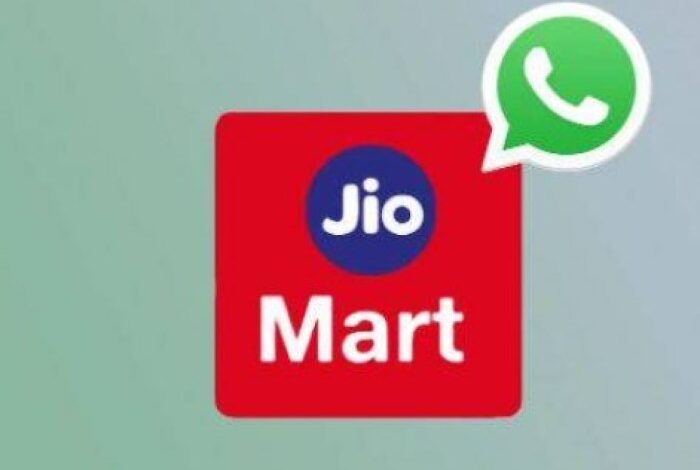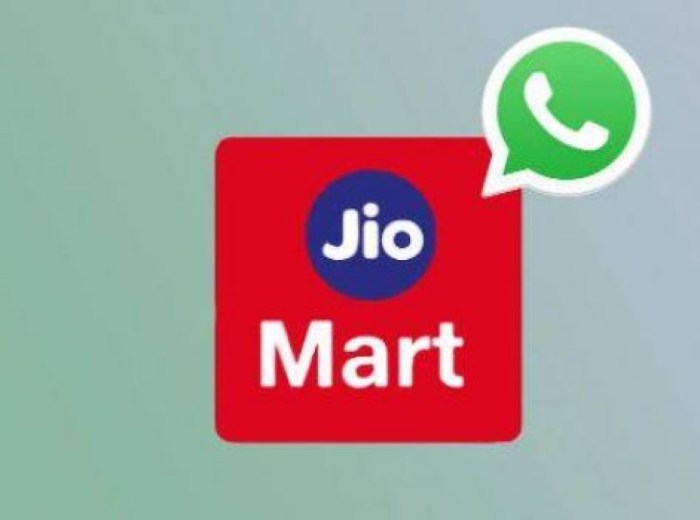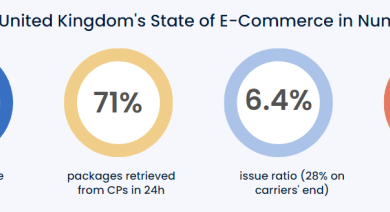
Are e tailers ignoring the bottom line – Are e-tailers ignoring the bottom line? This crucial question delves into the complex financial realities facing online retailers today. From the escalating costs of shipping and marketing to the challenges of optimizing fulfillment and customer acquisition, we’ll explore the key factors impacting e-tailer profitability. Different business models, like subscription boxes and direct-to-consumer brands, will be compared, and case studies of both successful and struggling companies will illuminate the path forward.
The article will dissect the various aspects of profitability in the e-tailing industry, focusing on pricing strategies, operational efficiency, customer acquisition costs, technological advancements, and the ever-changing market trends. We’ll examine how each of these factors contributes to or detracts from the bottom line, providing valuable insights for both established and aspiring e-tailers.
E-tailer Profitability Challenges
The allure of online retail is undeniable, yet the path to profitability for e-tailers is often fraught with complexities. While the reach and convenience of e-commerce are substantial, the underlying financial pressures can be significant and often underestimated. This exploration delves into the multifaceted challenges that impact the bottom line of online businesses.E-commerce’s rapid growth has led to increased competition, squeezing profit margins.
Maintaining a competitive edge requires constant innovation and adaptation, often at the expense of short-term profitability. The intricate web of costs associated with fulfillment, marketing, and customer service necessitates a meticulous approach to financial management.
Common Financial Pressures
E-tailers face numerous financial pressures stemming from the unique demands of the online marketplace. These pressures include intense competition, rapid technological advancements, and the need for continuous innovation. Meeting customer expectations for speed, convenience, and personalized experiences often requires significant investment, potentially straining profitability.
Cost Components Impacting Bottom Lines
Several key cost components exert pressure on e-tailer profitability. Shipping costs, often overlooked, can escalate rapidly with increased order volume and complex delivery requirements. Marketing expenses, particularly for attracting new customers and maintaining brand visibility, are another significant drain. Fulfillment costs, encompassing warehousing, order processing, and packaging, are crucial to minimizing delays and maximizing efficiency. Furthermore, customer service costs, essential for resolving issues and maintaining customer loyalty, are often underestimated but vital for sustained profitability.
Profitability Models by Business Type
Different e-tailer business models present unique profitability challenges. Subscription box businesses, for example, rely on recurring revenue streams, but must carefully manage customer churn and maintain profitability through consistent value delivery. Direct-to-consumer (DTC) brands, often prioritizing brand building and direct customer relationships, face challenges in scaling operations and managing costs efficiently. Established retailers transitioning to online channels may face challenges in adapting their existing infrastructure to the specific demands of online sales.
Examples of E-tailers Struggling with Profitability
Several e-tailers, despite high sales volumes, have struggled with achieving profitability. This often stems from a failure to manage costs effectively, particularly in areas like logistics and marketing. A lack of efficient inventory management or insufficient attention to customer service can significantly hinder profitability, even with substantial sales. Case studies of such companies highlight the importance of careful cost analysis and operational efficiency.
Key Performance Indicators (KPIs) for Profitability
Several key performance indicators (KPIs) are essential for tracking and monitoring e-tailer profitability. These include gross margin, operating expenses, customer acquisition cost (CAC), and customer lifetime value (CLTV). Monitoring these KPIs provides crucial insights into the financial health of the business and allows for proactive adjustments to strategies. A clear understanding of these metrics is vital for informed decision-making.
Financial Impact of Operational Inefficiencies
| Operational Inefficiency | Potential Impact on Profitability |
|---|---|
| Inefficient Order Fulfillment | Increased shipping costs, order delays, customer dissatisfaction |
| High Customer Return Rates | Reduced gross profit, increased handling costs, negative brand perception |
| Poor Inventory Management | Increased storage costs, obsolete inventory, lost sales opportunities |
| Ineffective Marketing Strategies | High customer acquisition costs, low conversion rates, wasted marketing spend |
| Lack of Data Analytics | Inability to identify profitable strategies, poor resource allocation |
Operational inefficiencies, if left unaddressed, can severely impact e-tailer profitability. The table above illustrates the potential consequences of various inefficiencies. Proactive identification and mitigation of these issues are critical for long-term success.
Pricing Strategies and Profitability

Pricing strategies are the lifeblood of any e-tailer, directly impacting profitability and long-term success. A well-defined and executed pricing strategy allows businesses to optimize revenue, manage costs effectively, and attract and retain customers. Conversely, poor pricing strategies can lead to significant losses and hinder growth. This section delves into the critical relationship between pricing and profitability in the e-tailing sector.Pricing strategies play a pivotal role in the profitability of e-tailers.
Effective pricing strategies attract customers, manage inventory, and maximize profits. Poorly implemented strategies can result in lost sales, reduced market share, and ultimately, lower profitability.
Impact of Dynamic Pricing Models
Dynamic pricing models, which adjust prices in real-time based on various factors like demand, competitor pricing, and inventory levels, have become increasingly prevalent in the e-tailing industry. These models can significantly impact e-tailer bottom lines by allowing for the optimization of revenue. Dynamic pricing allows businesses to respond to market fluctuations, capitalizing on high demand periods and mitigating losses during slow periods.
Are e-tailers truly ignoring the bottom line? It’s a question that’s been debated for ages. While the recent news of Red Hat joining Intel’s ISP program red hat joins intel isp program might seem like a niche tech development, it could have surprising implications for the broader e-commerce landscape. Ultimately, the question of whether e-tailers are prioritizing profit remains a key concern.
However, they also present a challenge for maintaining customer trust, as perceived price gouging can damage brand reputation. Careful implementation is key to maximizing profitability while maintaining customer loyalty.
Comparison of Profitability Across Pricing Strategies
Different pricing strategies yield varying degrees of profitability for e-tailers. Cost-plus pricing, where prices are set by adding a markup to the cost of production, is straightforward but may not reflect market conditions. Value-based pricing, which focuses on the perceived value of the product to the customer, can generate higher profit margins, but requires a thorough understanding of the target market.
Competitive pricing, which mirrors competitor pricing, is a common strategy, but it can limit profit potential. Ultimately, the optimal strategy depends on the specific e-tailer’s circumstances and market conditions.
Detrimental Pricing Strategies
Certain pricing strategies can be detrimental to profitability. Price wars, where e-tailers engage in aggressive price-cutting to gain market share, often lead to unsustainable losses for all participants. Failing to consider the psychological impact of prices, like the anchoring effect, can lead to suboptimal pricing choices. Unrealistic pricing, often disconnected from market values and customer expectations, can severely impact sales and profits.
Additionally, ignoring the cost of shipping and other associated expenses in pricing calculations can erode profit margins.
Effective Pricing Strategies
Several e-tailers effectively leverage pricing strategies to enhance profitability. Companies like Amazon, with their sophisticated dynamic pricing models, demonstrate how to optimize revenue streams. Similarly, Warby Parker, by focusing on value-based pricing and transparent pricing models, have built a loyal customer base. These examples highlight the importance of understanding the market, the customer, and the associated costs in establishing a profitable pricing strategy.
Correlation Between Pricing Strategy and Profitability
| Pricing Strategy | Potential Impact on Profitability | Example |
|---|---|---|
| Cost-plus pricing | May not fully reflect market conditions, potentially leading to lower profitability if the markup is insufficient or market prices are lower. | A simple e-tailer selling basic products. |
| Value-based pricing | Can lead to higher profit margins if the perceived value aligns with the price. | A luxury e-tailer selling high-end products. |
| Competitive pricing | Can limit profit potential, as prices are often determined by competitor actions. | An e-tailer in a highly competitive market. |
| Dynamic pricing | Can maximize revenue by adjusting prices in real-time, but requires careful management to avoid alienating customers. | An e-tailer selling travel packages or event tickets. |
| Price wars | Can result in unsustainable losses for all participants. | Rarely leads to sustainable profitability. |
Operational Efficiency and Cost Reduction
E-tailers face unique challenges in maintaining profitability. Beyond the intricacies of pricing and marketing strategies, operational efficiency plays a critical role in success. Optimizing fulfillment and logistics, managing inventory effectively, and strategically reducing marketing spend are key elements in achieving sustainable profitability. This section delves into these crucial aspects.Efficient operations translate directly to lower costs, which can be reinvested in growth, better customer service, or more competitive pricing.
Cutting operational costs without compromising service is a continuous balancing act, and smart strategies can significantly impact an e-tailer’s bottom line.
Optimizing Fulfillment and Logistics Processes
Streamlining fulfillment and logistics is essential for reducing costs in e-tailing. This involves examining every step of the process, from order placement to delivery, to identify bottlenecks and areas for improvement. Utilizing technology like automated order processing systems, optimized warehouse layouts, and efficient transportation networks are crucial. Implementing real-time tracking and predictive analytics can further enhance efficiency.
Reducing Marketing Costs While Maintaining Brand Visibility
Marketing costs can be substantial for e-tailers. Strategies for reducing marketing spend without compromising brand visibility are vital. One approach is to focus on high-return marketing channels. Instead of relying solely on broad-based advertising, e-tailers can leverage targeted digital marketing, social media engagement, and influencer collaborations. Building a strong brand reputation through exceptional customer service and product quality often leads to organic growth and reduced reliance on expensive marketing campaigns.
Examples of E-tailers Implementing Cost-Cutting Measures
Many successful e-tailers have implemented cost-cutting measures to improve profitability. For example, Amazon has been a pioneer in optimizing its fulfillment network, utilizing sophisticated algorithms and extensive fulfillment centers to minimize delivery times and costs. Similarly, companies like Walmart have leveraged their existing retail infrastructure to provide a wider range of fulfillment options to customers, reducing fulfillment costs and maximizing customer satisfaction.
Automated Inventory Management Systems, Are e tailers ignoring the bottom line
Automated inventory management systems are powerful tools for cost reduction. These systems track inventory levels in real-time, automatically reorder stock when necessary, and minimize storage costs. They reduce the risk of stockouts and overstocking, which are significant cost drivers for e-tailers.
Are e-tailers truly ignoring the bottom line? Recent initiatives like Microworkz.com teaming up with AT&T to offer free internet access microworkz com teams with att to offer free internet access seem to suggest a shift in priorities. Perhaps, in some cases, a focus on community engagement and accessibility is a more strategic long-term play than just chasing short-term profits.
This certainly raises questions about the future of e-commerce and whether prioritizing community over immediate profit margins is a viable business model.
Comparison of Fulfillment Methods
| Fulfillment Method | Costs (Estimated, per order) | Pros | Cons |
|---|---|---|---|
| In-house Fulfillment | $5-$15 | Direct control, high customization | High upfront investment, limited scalability |
| Third-Party Fulfillment (3PL) | $2-$8 | Scalability, flexibility | Less control over the process, potential for communication issues |
| Dropshipping | $0.50-$2 | Minimal upfront investment | Limited control over product quality, slower delivery times, potentially lower profit margins |
Note: Costs are estimates and may vary based on the specific service provider, order size, and product characteristics.
Are e-tailers truly ignoring the bottom line? Recent news suggests otherwise. Dell, for example, has just launched an affiliate program, dell launches affiliate program , a clear signal they’re actively seeking new revenue streams. This move could indicate a strategic shift away from solely relying on direct sales and towards incentivized partnerships, potentially impacting how we view the bottom-line focus of e-tailers in the future.
It remains to be seen, however, if this trend is widespread or a unique case.
Potential Cost Reduction Measures for E-tailers
- Implement a robust return policy management system. A streamlined process for handling returns can significantly reduce operational costs and improve customer satisfaction.
- Negotiate better rates with shipping carriers. This can be achieved through volume discounts or strategic partnerships.
- Optimize warehouse layout and utilize automation to reduce handling time. Efficient storage and movement of inventory are key to cost reduction.
- Invest in inventory management software to track stock levels in real-time. Real-time inventory tracking helps to prevent stockouts and overstocking, reducing waste.
- Partner with fulfillment centers for a cost-effective approach. Third-party logistics providers offer scalable and cost-effective fulfillment solutions.
Customer Acquisition and Retention Costs: Are E Tailers Ignoring The Bottom Line

E-tailers face a constant balancing act: attracting new customers while keeping existing ones satisfied. Understanding the costs associated with both acquisition and retention is crucial for achieving profitability. A well-defined strategy encompassing both aspects can significantly impact the bottom line, fostering sustainable growth and long-term success.
Impact of Customer Acquisition Costs (CAC) on E-tailer Profitability
Customer Acquisition Cost (CAC) represents the total expenses incurred to acquire a new customer. High CAC directly translates to lower profitability if not offset by sufficient revenue generation. A significant portion of marketing budgets is often allocated to acquiring new customers, but this investment must be carefully managed to avoid diluting overall profits. The CAC needs to be strategically considered alongside customer lifetime value (CLTV).
Customer Retention Strategies and Profitability
Customer retention is equally vital for profitability. Happy customers are more likely to make repeat purchases, refer friends, and become brand advocates. Building strong customer relationships through exceptional service, personalized experiences, and valuable content directly contributes to higher lifetime customer value (CLTV). A loyal customer base significantly reduces the need for continuous customer acquisition efforts, resulting in lower CAC and increased profitability.
Comparison of CAC Across Different Acquisition Channels
Different marketing channels have varying CACs. Search engine marketing (SEM) often yields a higher CAC compared to social media marketing. Email marketing campaigns, if effectively targeted, can provide a lower CAC. Analyzing the return on investment (ROI) for each channel is critical to optimizing the allocation of marketing resources. This allows for strategic adjustments to channel usage to maximize customer acquisition while minimizing costs.
Strategies for Lowering Customer Acquisition Costs
Effective strategies to reduce CAC include optimizing website performance, utilizing targeted advertising campaigns, implementing effective search engine optimization () strategies, and leveraging social media platforms. A well-defined marketing strategy with a focus on the customer journey can greatly reduce CAC. A clear understanding of the customer needs and pain points will also help in creating effective campaigns.
Methods for Improving Customer Retention Rates
Improving customer retention involves several key strategies. Providing excellent customer service, building a loyal community, and offering exclusive rewards and promotions can significantly increase retention rates. A focus on personalized interactions, timely responses to customer inquiries, and proactive support all contribute to building stronger customer relationships. This fosters loyalty and encourages repeat business.
Relationship Between CAC, CLTV, and Profitability
A crucial metric for evaluating profitability is the relationship between CAC, CLTV, and profitability. A high CLTV compared to CAC indicates a profitable customer acquisition strategy. The optimal scenario is when the customer lifetime value (CLTV) exceeds the customer acquisition cost (CAC). Achieving this balance is key to sustainable profitability. For example, if the CLTV is significantly higher than the CAC, it signifies that the company is successfully acquiring and retaining customers at a cost that is lower than the revenue they generate.
Conversely, if the CAC exceeds the CLTV, the business is losing money on customer acquisition, which is detrimental to profitability.
| Metric | Description | Impact on Profitability |
|---|---|---|
| Customer Acquisition Cost (CAC) | The cost to acquire a new customer | Higher CAC reduces profitability if not offset by higher revenue. |
| Customer Lifetime Value (CLTV) | The total revenue a customer is expected to generate throughout their relationship with the company | Higher CLTV indicates greater profitability and customer loyalty. |
| CLTV / CAC Ratio | The ratio of CLTV to CAC | A ratio greater than 1 indicates profitability, while a ratio less than 1 indicates a need for adjustments in the acquisition strategy. A ratio of 3:1 is often considered a healthy benchmark. |
A profitable e-tailer demonstrates a high CLTV compared to its CAC.
Technological Advancements and Their Impact
E-tailers are constantly seeking innovative ways to optimize their operations and improve profitability. Technological advancements offer powerful tools to achieve this, from streamlining logistics to personalizing the customer experience. The digital landscape is evolving rapidly, demanding adaptability and a strategic approach to leveraging these advancements for sustainable growth.The digital revolution is impacting every facet of e-commerce, particularly the crucial balance between cost and revenue.
Smart application of technology can significantly enhance profitability by reducing operational costs while simultaneously boosting revenue streams through better customer engagement and streamlined processes. This involves embracing new technologies, understanding their impact on various business functions, and strategically integrating them into existing workflows.
Examples of Profitability-Enhancing Technologies
Technological advancements are reshaping the e-commerce landscape, creating opportunities for e-tailers to enhance profitability. These advancements cover a wide range of areas, from automating tasks to optimizing logistics and personalizing the customer experience. A few prominent examples include:
- Automated order fulfillment systems: These systems can significantly reduce labor costs associated with order picking, packing, and shipping. Software robots (e.g., Amazon’s Kiva robots) can quickly and accurately process orders, improving efficiency and reducing human error. This not only cuts costs but also enables faster order processing, improving customer satisfaction.
- AI-powered chatbots: Implementing AI-powered chatbots can provide 24/7 customer support, answer frequently asked questions, and guide customers through the purchasing process. This reduces the need for human customer service representatives, cutting operational costs and improving response times, which directly impacts customer satisfaction.
- Personalized recommendations: Algorithms can analyze customer data to provide tailored product recommendations, leading to increased sales and higher average order values. This enhanced personalization strategy is seen as a major driver of revenue growth in many successful online stores.
Data Analytics in Optimizing E-tailer Operations
Data analytics plays a critical role in understanding customer behavior, market trends, and operational performance. By analyzing large datasets, e-tailers can identify patterns and insights that drive informed decision-making.
- Predictive analytics: Analyzing historical data to predict future trends in demand, customer behavior, and market conditions enables e-tailers to proactively adjust inventory levels, pricing strategies, and marketing campaigns. This forward-looking approach can minimize risks and maximize opportunities.
- Real-time monitoring: Tracking key performance indicators (KPIs) in real time allows e-tailers to identify and address issues quickly. This agility is crucial in the dynamic online marketplace, enabling proactive responses to changing market conditions and customer preferences.
AI and ML Impact on Profitability
Artificial intelligence (AI) and machine learning (ML) are transforming e-tailer operations, offering opportunities for significant cost reduction and revenue enhancement.
- Fraud detection: AI algorithms can identify fraudulent transactions in real time, reducing financial losses and protecting both the business and its customers. This is crucial for building trust and ensuring the security of online transactions.
- Pricing optimization: AI can analyze market data to determine optimal pricing strategies, maximizing revenue while remaining competitive. This dynamic pricing approach is especially effective in rapidly changing markets.
Emerging Technologies Changing E-tailer Models
Emerging technologies are continually reshaping e-tailer profitability models. These include advancements in virtual reality (VR) and augmented reality (AR) to enhance the customer experience.
- VR and AR experiences: These technologies can immerse customers in interactive product demonstrations and virtual try-ons, fostering stronger engagement and potentially leading to higher conversion rates. This enhances the online shopping experience and potentially reduces returns.
Impact on Cost and Revenue Balance
Technological advancements impact the balance between cost and revenue in various ways. Automation and AI-powered solutions can reduce operational costs, while personalization and targeted marketing can increase revenue.
| Technology | Impact on Cost | Impact on Revenue |
|---|---|---|
| Automated Order Fulfillment | Reduced labor costs, improved efficiency | Faster delivery, improved customer satisfaction |
| AI-powered Chatbots | Reduced customer service costs | 24/7 support, improved response times |
| Personalized Recommendations | No direct cost impact, but potentially increased customer acquisition costs | Increased sales, higher average order values |
Market Trends and Their Influence
E-tailers operate in a dynamic market where consumer preferences, global forces, and competitive landscapes constantly shift. Understanding these trends is crucial for profitability. Adapting to changing consumer demands, evaluating global expansion opportunities, and recognizing the impact of competitors are vital components of a successful e-tailing strategy. These trends can significantly affect pricing, operations, and ultimately, the bottom line.
Impact of Changing Consumer Preferences
Consumer preferences are in constant flux, demanding adaptability from e-tailers. The rise of personalized shopping experiences, emphasis on sustainability, and increased demand for convenience significantly shape e-tailer strategies. Consumers increasingly expect tailored product recommendations, transparent ethical sourcing, and seamless order fulfillment. E-tailers must leverage data analytics to understand these evolving preferences and tailor their offerings accordingly. For example, a growing preference for eco-friendly products can drive demand for sustainable packaging and materials, influencing product sourcing and pricing.
Influence on E-tailer Pricing Strategies
Market trends directly impact pricing strategies. Consumer preferences for value, premium offerings, and the availability of various pricing tiers (e.g., subscription models) influence how e-tailers structure their pricing. For instance, if consumers favor a subscription model, e-tailers must evaluate the feasibility of a subscription service for their products. This can impact both the initial product pricing and the recurring revenue generated.
Further, factors like competitor pricing and economic conditions play a role in shaping the optimal pricing strategy.
Role of Globalization in Affecting E-tailer Profitability
Globalization presents both opportunities and challenges. Expanding into new markets can unlock substantial growth potential, but it also introduces complexities related to logistics, regulations, and cultural nuances. The cost of shipping, tariffs, and payment processing fees in different countries significantly impact profitability. For example, the expansion of e-tailers into international markets requires careful consideration of local laws and regulations, potentially impacting product pricing and operational costs.
Impact of Different Market Segments
Different market segments exhibit varying purchasing patterns and expectations. Targeting specific demographics (e.g., Gen Z, millennials) requires tailored marketing and product offerings. Understanding the needs and preferences of these segments allows e-tailers to customize their strategies and improve customer engagement. For example, a specific segment might be highly interested in eco-friendly products, while another might favor premium brands.
Impact of Competition on E-tailer Profitability
Competition is a constant factor influencing e-tailer profitability. Increased competition necessitates innovation, cost reduction, and strategic positioning to maintain market share. E-tailers must analyze competitor offerings, pricing, and marketing strategies to identify opportunities for differentiation. This includes understanding their strengths and weaknesses, and leveraging their own unique advantages. For example, one e-tailer might focus on a niche market, while another might prioritize a wider selection.
Summary Table: Market Trends and Potential Effects
| Market Trend | Potential Effect on E-tailer Profitability |
|---|---|
| Changing Consumer Preferences (e.g., sustainability, personalization) | Increased need for adaptable offerings, potentially impacting pricing and operations. |
| Globalization | Opportunities for expansion, but also increased complexities in logistics, regulations, and cultural nuances. |
| Competition | Requires innovation, cost reduction, and strategic positioning to maintain market share. |
| Market Segment Variations | Need for tailored marketing and product offerings for optimal customer engagement. |
| Pricing Strategies | Influence by consumer preferences and competitor pricing. |
Ultimate Conclusion
In conclusion, e-tailers face a multitude of interconnected challenges in achieving profitability. Ignoring these elements can lead to significant financial setbacks. This discussion highlighted the importance of meticulous cost management, strategic pricing, and adapting to emerging market forces. By understanding these interconnected factors, e-tailers can develop robust strategies to not only survive but thrive in the competitive online landscape.






